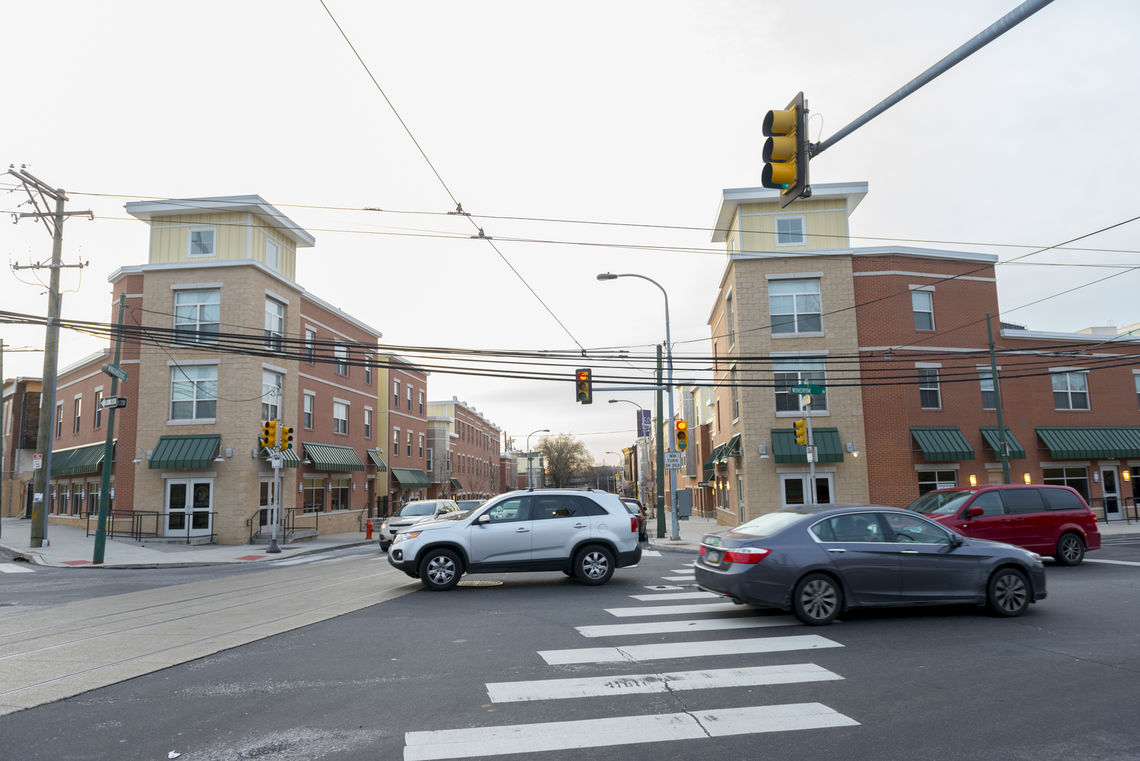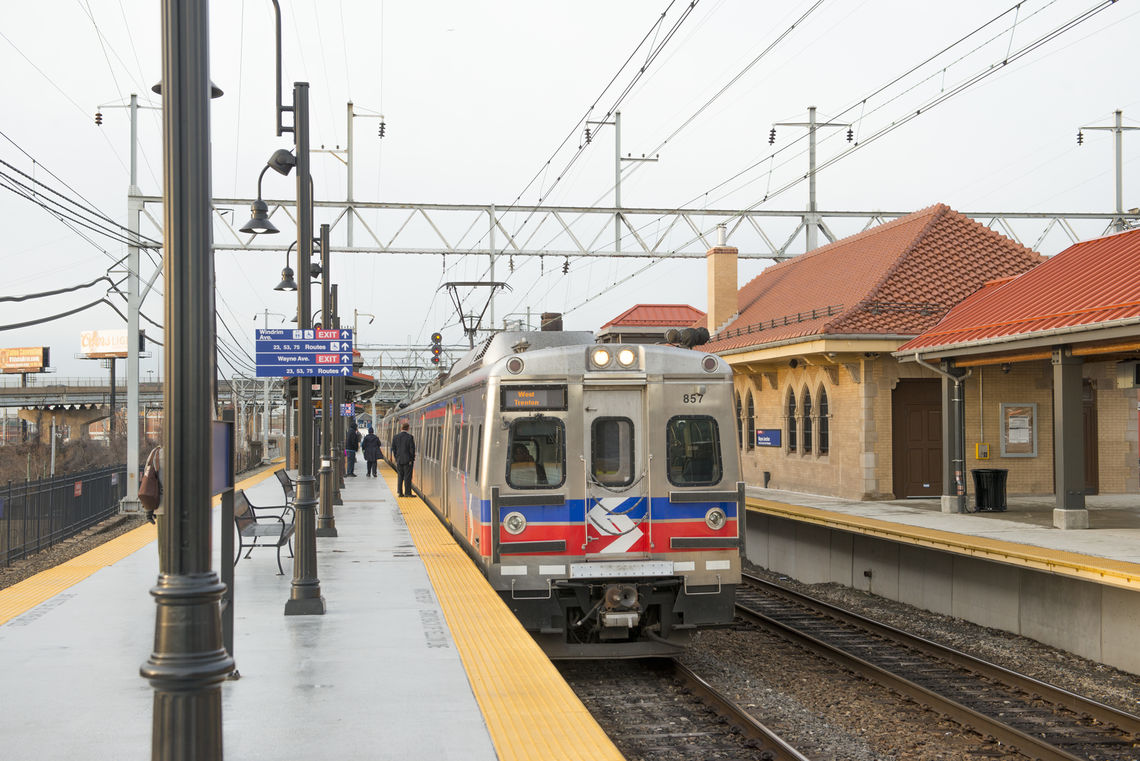Wayne Junction
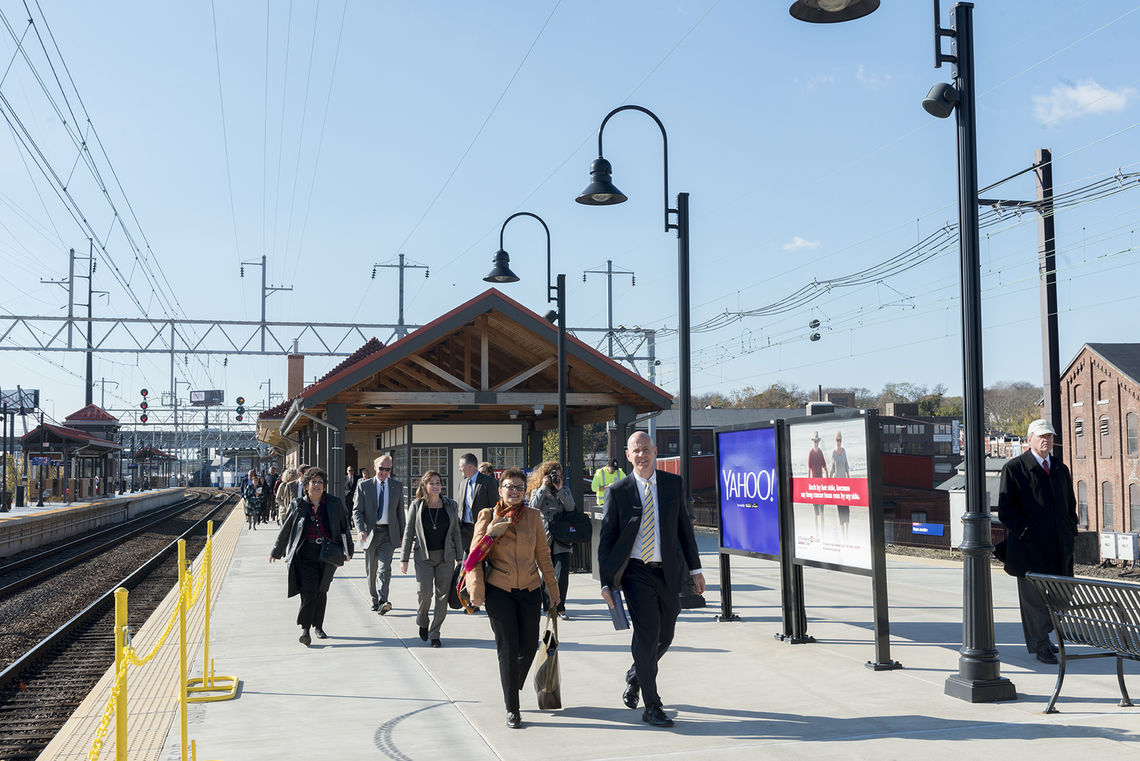
Standing on the platform of the recently restored Wayne Junction Station, you can already see the difference the development-growth has made to the surrounding communities from the recent investment. The station is positioned directly between two Philadelphia neighborhoods in transition: Germantown to the west, and Nicetown to the east. During Philadelphia’s industrial age, both neighborhoods supported numerous factories bringing an abundance of jobs to the area. Now, with those factories and jobs long since gone, the neighborhoods look to revitalize their local economies with the help of active Community Development Corporations. SEPTA’s Wayne Junction Station is critical to this revitalization.
The modernization of the Wayne Junction Rail Station makes it more inviting for people to take the train.
– Therese McMillan, FTA Acting Administrator
One of the Southeastern Pennsylvania Transportation Authority’s (SEPTA’s) busiest stations, Wayne Junction, serves 190,000 riders annually. As a junction, it provides a multi-modal transfer point between six of SEPTA’s regional rail lines, including the Airport, Warminster, West Trenton, Lansdale/Doylestown, Chestnut Hill East, and Fox Chase lines. Conveniently, it is only a short 12-minute ride to Center City Philadelphia, and with the frequency of trains passing through the station, passengers often experience 15 minute or less headways. However, over the years, it has fallen into an unfortunate state of disrepair.
WayneJunctionBefore
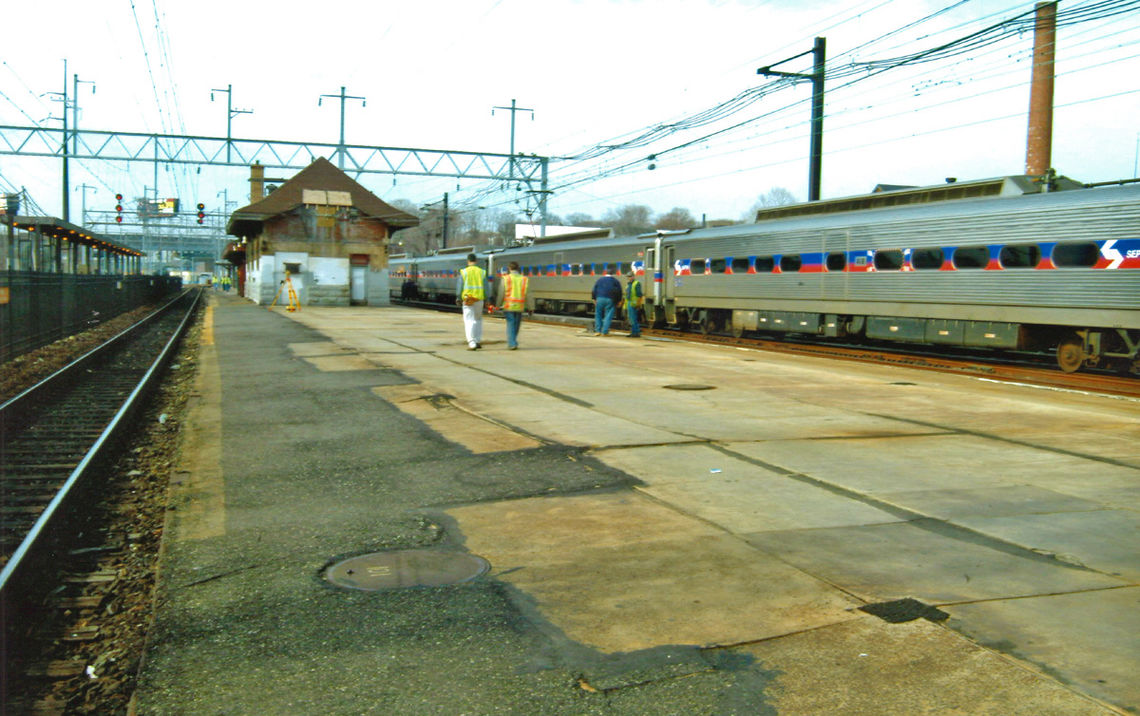
As SEPTA’s General Manager, Jeff Knueppel, recalled when passing though the station before renovations, “I would have to close my eyes; it was tough to look at.” Years of heavy use, changing commuter patterns, deferred maintenance, and vandalism had overrun this landmark in the Colonial Germantown Historic District. SEPTA embarked on a comprehensive program to revitalize the character of the original station while providing passengers with a universally accessible, safe, and efficient means of transportation. Funding for the project was achieved through the Federal Transportation Administration (FTA) Bus and Bus Livability Initiative and bond funds.
I would have to close my eyes; it was tough to look at.
– Jeff Knueppel, SEPTA’s General Manager
SEPTA invested more than $31.5 million to preserve this notable landmark, its history, and architecture, while adding American with Disabilities (ADA) compliant upgrades to make the station viable for 21st-century demands.
“What’s really remarkable about seeing a space like this come back to life in a low-income neighborhood with a high poverty rate, is that it is a sign of respect,” says Emaleigh Doley, Commercial Corridor Manager at Germantown United CDC. “The people who live and work here, and are using public transit to get where they need to go, are being acknowledged in a different light.”
Wayne Junction Lady
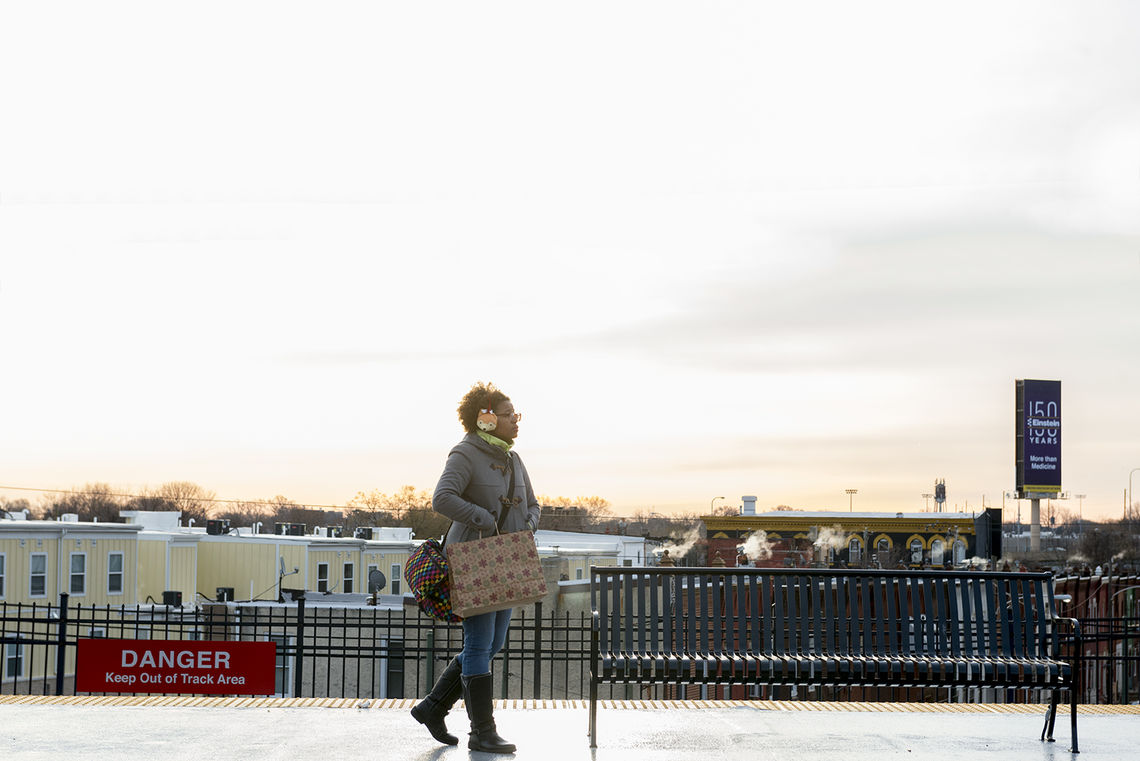
The investment is giving momentum to a larger effort to redevelop neighborhoods surrounding the station, including the recently-designated Wayne Junction Industrial Historic District. The recent mixed-use housing developments of Nicetown Court I and II, visible from the station’s platform, were spurred by the investments made in Wayne Junction Station. “This transit-centered station helped to catalyze the economic development you see across the street and down the street,” says Majeddah Rashid, Executive Director of the Nicetown CDC. “Hopefully we will be making more connections – residentially and commercially.”
The people who live and work here,… are being acknowledged in a different light.
– Emaleigh Doley, Commercial Corridor Manager at Germantown United CDC
In addition to its current role in the community, Wayne Junction Station carries with it a great deal of historical significance. Opened in 1832 by the Reading Railroad, the station was designed by famed Philadelphia architect, Frank Furness. Furness is known for his modernist Victorian-Gothic style that boldly utilized and combined materials like stone, terra cotta, and brick in innovative ways. “Between 1878 and 1906, Furness designed nearly 200 commissions for the Reading, the B & O, and the Pennsylvania Railroads, the modern equivalent of IBM, Dell, and Apple,” according to FrankFurness.org.
Wayne Junction Trains
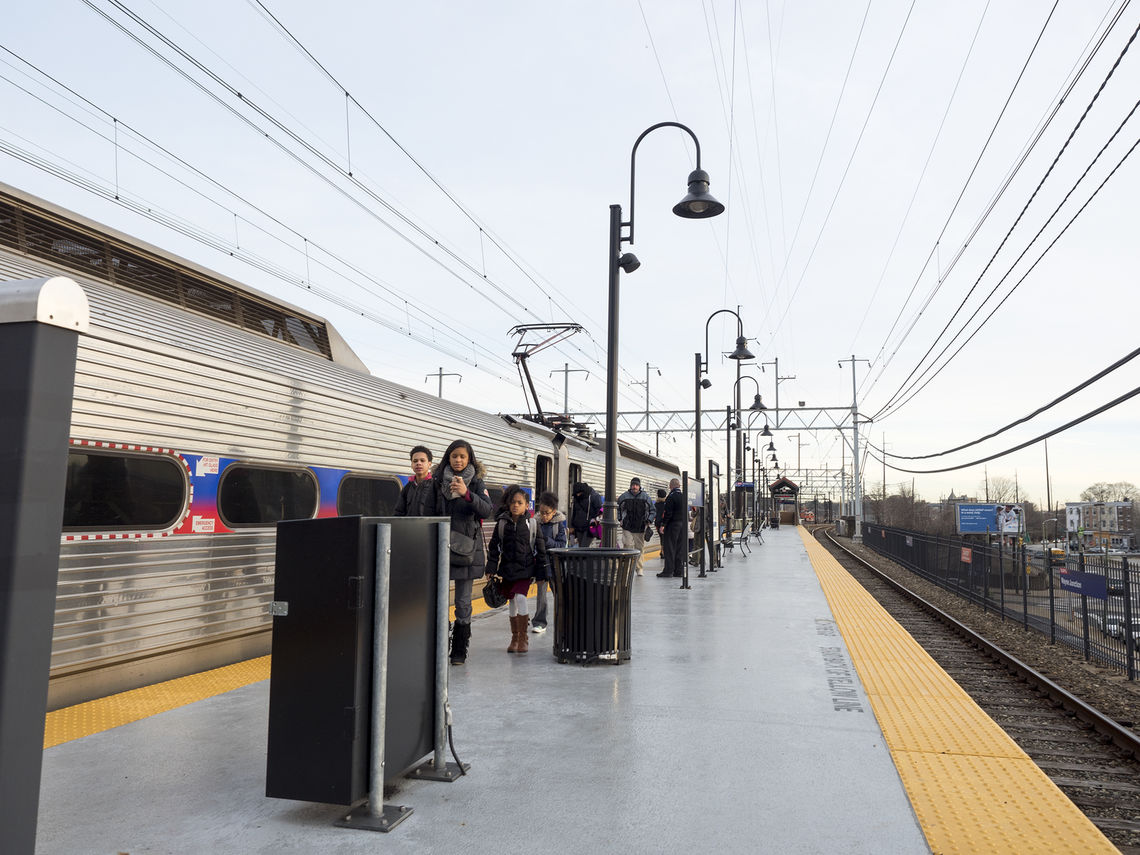
Located within the Colonial Germantown Historic District, Wayne Junction Station is on the National Register of Historical Places, a designation received by the National Park Service of the U.S. Department of Interior. In the inventory of this historic district, both the Germantown Avenue Waiting Room Building, currently serving as a headhouse of the Germantown Avenue portal, and the Baggage Room Building, used as the Station House with a waiting room and ticket office, are considered “Significant.” “The historical significance was extremely important to maintain,” says Rashid. “You see the beautiful job that’s been done.“
A federally mandated process set forth by the State Historic Preservation Office (SHPO) was followed to preserve the tradition and the functionality of the station; ensure the historic integrity of this piece of railroad history while introducing sympathetic interventions; upgrade compliance with the Americans with Disabilities Act (ADA); and, restore a Philadelphia and Railroad treasured jewel that will stimulate neighborhood revitalization.
The historical significance was extremely important to maintain. You see the beautiful job that’s been done.
– Majeddah Rashid, Executive Director of the Nicetown CDC
“The modernization of the Wayne Junction Station makes it more inviting for people to take the train, and that will make these neighborhoods, and others throughout metro Philadelphia, more livable and more sustainable,” said FTA Acting Administrator, Therese McMillan. The station’s restoration not only met the needs of SEPTA and its riders, but also the needs of the neighborhood. Wayne Junction stands as an example of how careful planning, community engagement, and historic restoration can come together to produce a modern, ADA-compliant multi-modal station that promotes transit-oriented development.
SEPTA’s design team, led by Urban Engineers and UCI Architects, provided planning, design and preparation of comprehensive construction documents to address the needs and goals of the program. Key components of this improvement project include:
- Rehabilitating the historic Station’s platforms, providing level boarding through the construction of high-level platforms
- Renovating the Baggage Room Building and Waiting Room Building
- Removing and replacing canopies
- Installing ADA-compliant elevators and ramps
- Restoring passenger tunnels and stairways from Wayne, Germantown, and Windram Avenues
- Consolidating service on the Chestnut Hill East Line onto one track on the west side of the new high-level
- Improving passenger amenities, including audio-visual public announcement system, signage, windscreens, and benches; and Painting the Wayne Avenue Bridge
